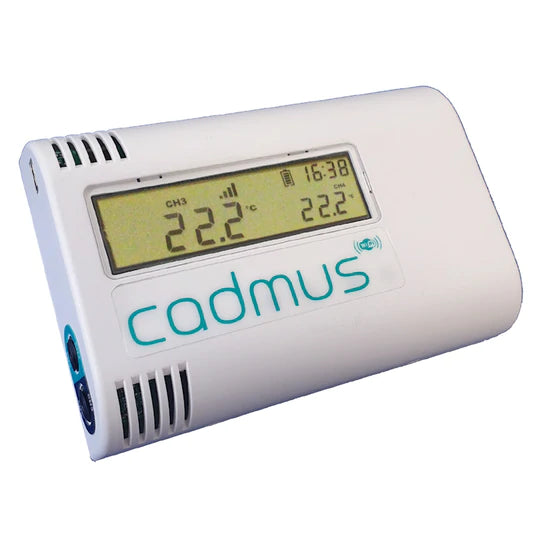How Can Temperature Data Loggers Help In The Battle Against Listeria?

Food safety is a global concern, and few pathogens cause shivers of fear like Listeria. Prolific, deadly, and difficult to eradicate once it takes hold, Listeria can wreak havoc in any cold storage unit. Temperature control is one of the best weapons for combating the pathogen, but quality and accuracy matter. Here’s what you need to know to keep your products safe.
What is Listeria?
Listeria is a type of intracellular parasite. Intracellular parasites are small organisms that grow and reproduce inside the cells of the host. The cell provides the parasite with all the nutrition that it needs to thrive, which is why intracellular infections are responsible for millions of deaths worldwide. There are currently 21 known species of Listeria, with foodborne Listeriosis described by the World Health Organisation (WHO) as “one of the most serious and severe foodborne diseases”. Studies suggest that around 1 in 5 cases are fatal. This figure would be significantly higher if it included the 40% pregnancy loss and stillbirth associated with Listeriosis.
Economic impact of Listeria
The economic impact of a Listeria outbreak can be significant. The UK government has not put a precise figure on the annual cost of foodborne pathogens, but the US claims that its total is at least $15.5 billion (£12.5 billion). In 2008, a single outbreak at a delicatessen plant in Canada led to 57 cases and 24 deaths, and the final cost was $284 million Canadian dollars, of which only $2.8 million was spent settling court cases – the rest was spent on the clean-up operation and product loss, as well as medical bills.
Types of food that are prone to Listeria
Listeria can contaminate a wide range of foods. It is most commonly found in chilled, ready-to-eat products and meals, including cooked meats, soft cheeses, pre-packed sandwiches, salads, and cut fruits such as melon: in other words, all the chilled food associated with on-the-go lunches. Cases of Listeriosis tend to increase during the summer months when picnics and al-fresco dining become more popular.
Why is Listeria such a problem in cold storage units?
Listeria is a very hardy pathogen. It tolerates salty environments and - although it prefers an ambient room temperature – it has been shown to survive below -1.5oC. Listeria can find a comfortable home in almost any area of a factory, even when the most meticulous sanitation protocols are followed, but the evaporation plates inside cold storage units are a particular favourite. The automatic defrosting process briefly heats the bacteria to a comfortable temperature and blows it into the unit. At this point, the temperature of the cold storage container makes a real difference regarding whether Listeria can flourish. If the temperature creeps above 5oC, there could be a real problem.
How can data loggers help?
Accurate data loggers are essential for ensuring the safety of cold storage units. By measuring the temperature of an environment, they enable employees to take complete control of critical conditions. The accuracy of the data logger is crucial, with ±0.12oC being the preferred tolerance. Many data loggers – including those that may be built-in to the cold storage unit – only have a ±0.5oC accuracy, which is too broad for Listeria. Additionally, the data logger needs to be reliable and certifiably calibrated to UKAS BSEN ISO 17025 standard.
How can Signatrol help?
At Signatrol, we tackle the issue of food-borne pathogens head-on with our range of EN12380 compatible temperature data loggers. As global leaders in data monitoring, we put safety at the heart of our agenda. To learn more about how to protect your environment from Listeria, please call 01684 299399 today.
